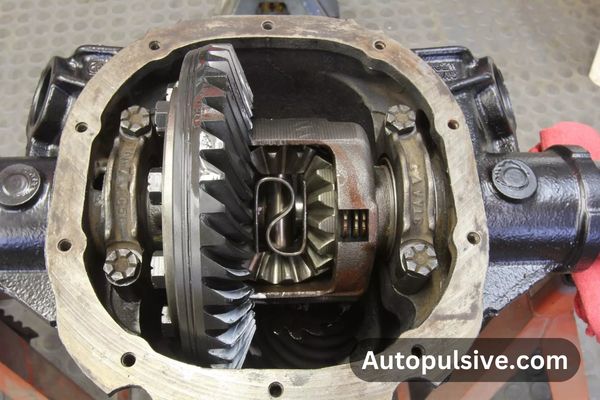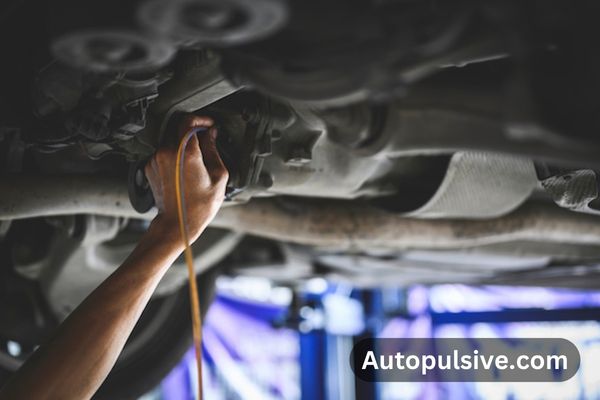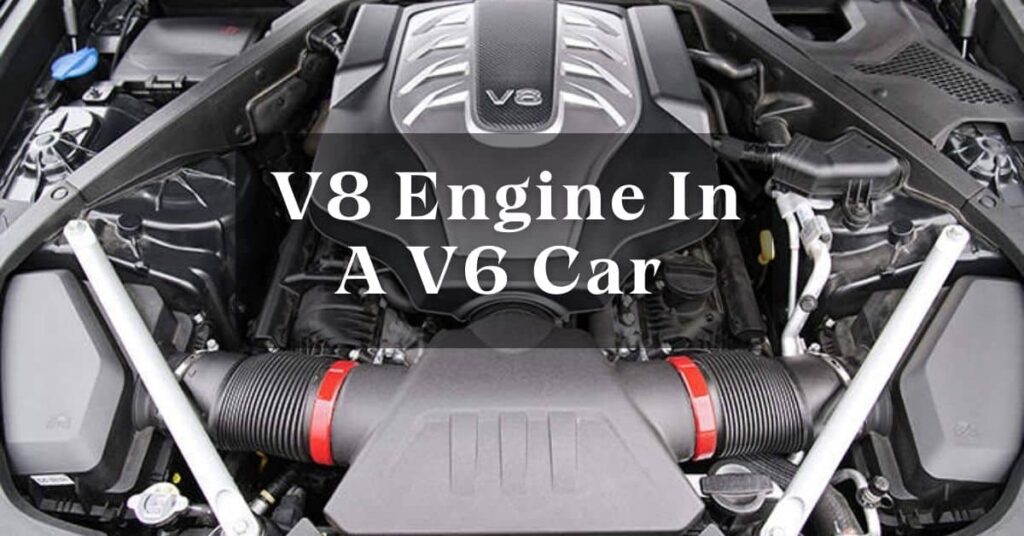The Whining differential in a car is an essential part that transfers engine power to the wheels so they can rotate at different speeds. Your heart may race when you hear an ominous noise from your car’s drivetrain. Is it just a whisper or an indication that something bad will happen?
Nonetheless, if a differential makes a whining sound, it might indicate multiple problems that may shorten its Lifespan.

In this article, we’ll explore the reasons behind a whining differential, any possible consequences, and maintenance procedures that can extend its Lifespan.
Understanding The Differential:
Before exploring the whine, let’s understand the differential’s role. This unsung hero distributes power between your car’s wheels, allowing them to rotate at different speeds while cornering.
Imagine turning a corner: the outer wheel travels a greater distance than the inner one. Without the differential, both wheels would be locked together, causing tire wear and potentially leading to loss of control.
A Bird-Eye View On The Life Span Of A Differential:
It’s impossible to accurately predict how many kilometers a differential can last without knowing the cause of the whine and the severity of the Noise. However, seeking the risk of catastrophic failure and potential loss of drivetrain power we still have tabularized the sounds to give an idea of the Lifespan of a differential:
| Factor | Reasoning | Potential Impact on Life Span |
| Continuous Howling or whining differential Sound | Irregular or non-maintenance leads to potential breakdowns, damaged Gears, or worn Bearings | The lifespan of the differential can be severely impacted and potentially range from 300 to 1000 kilometers before complete failure. |
| Inadequate lubrication and increased friction can cause Excessive play in gears or Broken rings, worn or damaged CV joints, or suspension components | Using low-quality or old lubricants results in insufficient protection and will result in Worn gear teeth | Lifespan might be slightly longer compared to the other noises, but still relatively short, ranging from 400 to 2000 kilometers, depending on the severity of the issue |
| Continuous clunking Sound or Banging or Clunking sound while Cornering | Inadequate lubrication and increased friction can cause Excessive play in gears or Broken rings, worn or damaged CV joints, or suspension components | The lifespan of the differential in such cases might vary, ranging from 300 to 1500 kilometers, depending on the severity of the issue |
| Rumbling, whining, or knocking at a higher speed | Continued aggressive driving or neglecting towing recommendations accelerates wear and increases the risk of failure. Worn or damaged gears or bearings | Inadequate lubrication and increased friction can cause Excessive play in gears or Broken rings, worn or damaged CV joints, or suspension components |
Causes of Whining Differential:
Following are the numerous factors that can cause Whining Differential:
1. Worn Bearing:
The bearing supports the rotating parts within the Differential. Worn-out or damaged bearings cause friction and produce a whining sound. The bearing can be worn by multiple factors like insufficient lubrication, excessive heat, or pollution. Early detection and prompt replacement will prevent any further damage.

2. Damaged Gears:
With time the Gears within the differential could be worn out due to continuous stress and friction. A distinctive grinding or whining sound is due to these worn or chipped gears meshing improperly.
Improper lubrication or differential fluid contamination might make this wear worse. This type of differential whining often indicates the more serious damage that needs to be replaced or repaired immediately.
3. Insufficient Fluid Level:
Just like the engine of your car a differential also needs lubrication. A whining noise that may be caused by increased heat, wear, and friction is the result of inadequate lubrication or low fluid level. So, to avoid such a scenario a regular fluid change is essential.
4. Improper Alignment:
Even the best-quality differential can whine if the gears or bearings are fitted improperly. Improper installation/ adjustment or misaligned parts during maintenance procedures can also produce a whine.

A Whining Differential’s Impacts on Your Vehicle:
1. Increased Wear:
Excessive friction and stress on internal components are the indications for the Whining differential. The continuous operation with a whining differential will lead to the premature damage of gears, bearings, and other essential parts.
2. Decreased Performance:
As differential components fail, they may no longer work properly resulting in decreased performance and making the drive more difficult. This situation can further worsen with reduced acceleration, weaker traction, or uneven tire wear.
3. Potential Safety Hazards:
Under severe scenarios, a failed differential can result in loss of vehicle control or mechanical breakdown while driving. Ignoring a whining differential can lead to catastrophic failures, endangering the vehicle occupants and other Vehicle Drivers.
Maintenance Practices To Prolong The Lifespan Of Differential:
Just like other parts of the vehicle, the differential’s life span can be increased and unwanted whines are preventable with some care, maintenance, and preventive measures. Here are some preventive measures:
1. Regular Fluid Monitoring and Changes:
To ensure ideal lubrication, the differential fluid’s level and condition should be monitored regularly. High-quality lubricants that are suitable for your vehicle should be used and Manufacturer recommendations for change interval must be followed.

2. Appropriate Installation and Adjustment:
While installing or maintaining the differential,l make sure that all the parts are aligned and torqued, as per the instructions of the manufacturer’s recommendations. Bolts and gears shouldn’t be overtightened nor should be loose as this may cause misalignment and early wear.
3. Moderate Driving Behaviors:
While driving you should always be careful and avoid rash driving or pulling heavy objects. Aggressive driving, rapid acceleration, abrupt braking, or high-speed turning can cause excessive stress on differential components. So, to lessen the wear and tear always drive smoothly, and carefully, and be prepared for the road conditions.
4. Regular Inspections:
A regular inspection must be carried out periodically to check the differential for indication of any leakage, abnormal vibrations, or unusual noises. In case of any problem go for an immediate solution to avoid any further damage and guarantee the differential’s continuous dependability.
5. Dealing With Whining Noise Urgently:
If you feel or hear a whining noise coming from the differential get it inspected by a qualified mechanic on an urgent basis. Timely detection and addressing the problem can stop any further damage and can also save costly repairs.
Pay Attention To The Sound of Differential:
Although it would sound interesting to ignore the whine, doing so is like ignoring a leaking faucet. Well, the issue will not disappear on its own. You can avoid future costly repairs and more serious damage by receiving an early diagnosis and action.
If your car is making noise but it’s not the differential? Here’s a breakdown of other common causes for different types of noises:
Turning Rumble:
This rumbling sound when turning corners is often caused by bad wheel bearings, not the differential. Wheel bearings support your wheels, and worn-out ones cause this rumble.
Speed-Linked Vibration:
If you feel a vibration that increases as you go faster, it could be worn U-joints connecting the driveshaft or an imbalanced driveshaft itself, not the differential.
Start/Stop Clunking:
A clunking sound when starting, stopping, or accelerating might come from:
- Loose yokes connecting the driveshaft to the transmission/transfer case.
- Worn U-joints again.
- Worn parts in the transmission or transfer case, not the differential.
Indicators Of Soundless Faulty Differential:
Well, it’s not always the noise that talks about the faulty differential. Sometimes it’s quiet but still, you can judge it by observing the following signs:
- Difficulty in Driving or Handling
- Overworn Tire
- Burning smell
- Concealed Gears
Key Points:
- Don’t jump to blaming the differential for every car noise.
- Check these common culprits based on the type of noise.
- Fixing these first may solve the problem and save money.
- If the noise remains, consult a mechanic for further evaluation.
What To Do When There Is A Whining Differential:
The following steps should be taken right away:
1. Pullover Carefully:
Find a safe spot to pullover that is away from traffic and switch on your warning lights.
2. Evaluate Circumstances:
After you’ve parked safely, evaluate the symptoms and look for the root of the issue. Seek out obvious indications of leaks or damage.
3. Stop Driving Further:
To avoid more damage or safety risks, don’t drive the car if you think there might be a differential problem.
4. Make A Roadside Assistance Contact:
Get assistance from a towing company or roadside assistance if you are unable to identify or fix the issue on your own. They can haul your car to a shop so that it can be examined and fixed further.
The Final Word:
If differential starts to complain your car shouldn’t automatically be doomed to death. You can maintain your car by making the best decisions based on knowledge of the causes, possible lifespans, and available solutions.
Recall that prompt diagnosis and appropriate treatment are essential for preventing any further damage. Ignoring differential problems or trying to drive with a broken differential can result in more damage, dangerous situations, and expensive repairs.
Also Read:
- Why Does My Car Tire Lose 5 PSI in a Week?
- How Do You Inflate A Car Tire With A Bike Pump? A Practical Guide in 5 Easy Steps
- Why do my RC car’s tires wear out so fast? Tips to Maintain Performance Over Time
- Is A 1.6 Engine Good For First Car? Make A Best Decision
- Can You Spray Your Engine Bay With Water? Best Guide to Prevent Damage
- Why Does My Car Tire Lose 5 PSI in a Week? - 4 November 2024
- How Do You Inflate A Car Tire With A Bike Pump? A Practical Guide in 5 Easy Steps - 30 October 2024
- Why do my RC car’s tires wear out so fast? Tips to Maintain Performance Over Time - 18 October 2024


